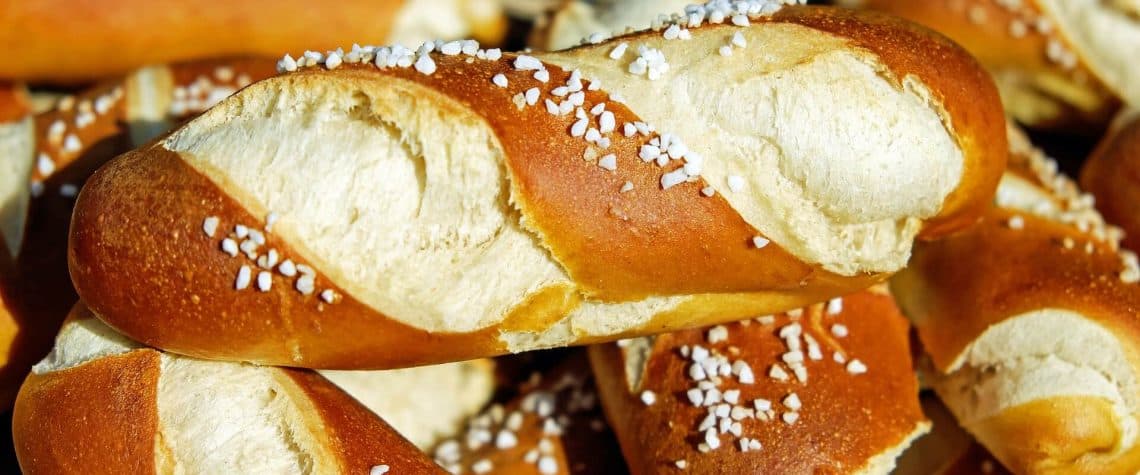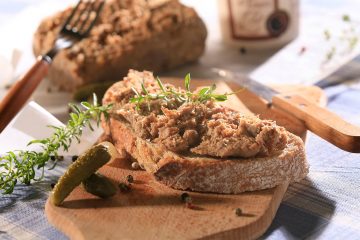

There are many combinations and proportions of types of flour and other ingredients, and also of different traditional recipes and modes of preparation of bread. As a result, there are wide varieties of types, shapes, sizes, and textures of breads in various regions. Bread may be leavened by one of many different processes, ranging from reliance on naturally occurring microbes (so-called “sourdough” recipes) to addition of chemicals or industrially produced yeast to high-pressure artificial aeration methods during preparation or baking.
Depending on local custom and convenience, bread may be served in various forms at any meal of the day. It also is eaten as a snack, or used as an ingredient in other culinary preparations, such as fried items coated in crumbs to prevent sticking, or the bland main component of a bread pudding, or stuffings designed to fill cavities or retain juices that otherwise might drip away.
Partly because of its importance as a basic foodstuff, bread has a social and emotional significance beyond its importance in nutrition; it plays essential roles in religious rituals and secular culture. Its prominence in daily life is reflected in language, where it appears in proverbs, colloquial expressions
The word itself, Old English bread, is most common in various forms to many Germanic languages, such as Frisian brea, Dutch brood, German Brot, Swedish bröd, and Norwegian and Danish brød; it has been claimed to be derived from the root of brew. It may be connected with the root of break, for its early uses are confined to broken pieces or bits of bread, the Latin crustum, and it was not until the 12th century that it took the place—as the generic name for bread—of hlaf (hlaifs in Gothic: modern English loaf), which appears to be the oldest Teutonic name. Old High German hleib and modern German Laib derive from this Proto-Germanic word for “loaf”, which was borrowed into Slavic languages as well.
In many cultures, bread is a metaphor for basic necessities and living conditions in general. For example, a “bread-winner” is a household’s main economic contributor and has little to do with actual bread-provision. This is also seen in the phrase “putting bread on the table”. The Roman poet Juvenal satirized superficial politicians and the public as caring only for “panem et circenses” (bread and circuses). In Russia in 1917, the Bolsheviks promised “peace, land, and bread.”
There were multiple sources of leavening available for early bread. Airborne yeasts could be harnessed by leaving uncooked dough exposed to air for some time before cooking. Pliny the Elder reported that the Gauls and Iberians used the foam skimmed from beer to produce “a lighter kind of bread than other peoples.” Parts of the ancient world that drank wine instead of beer used a paste composed of grape juice and flour that was allowed to begin fermenting, or wheat bran steeped in wine, as a source for yeast. The most common source of leavening was to retain a piece of dough from the previous day to use as a form of sourdough starter.
In 1961 the Chorleywood bread process was developed, which used the intense mechanical working of dough to dramatically reduce the fermentation period and the time taken to produce a loaf. The process, whose high-energy mixing allows for the use of lower protein grain, is now widely used around the world in large factories. As a result, bread can be produced very quickly and at low costs to the manufacturer and the consumer. However, there has been some criticism of the effect on nutritional value.



























